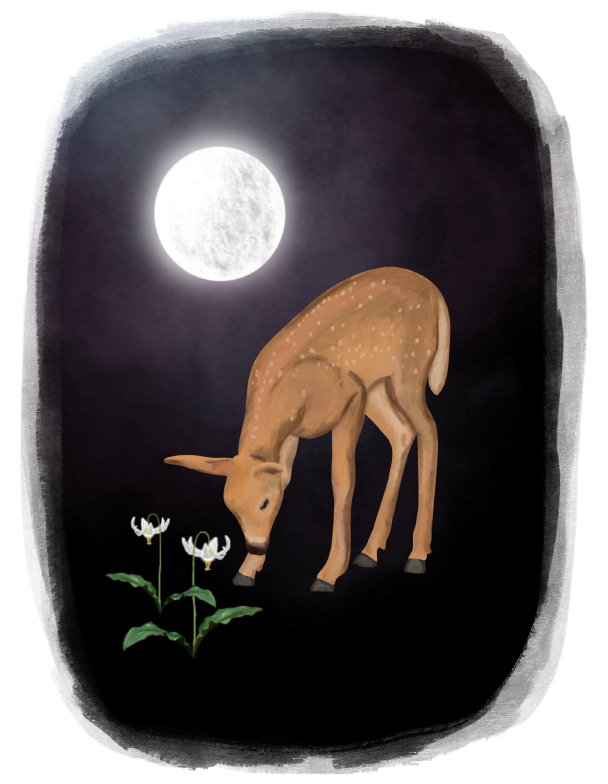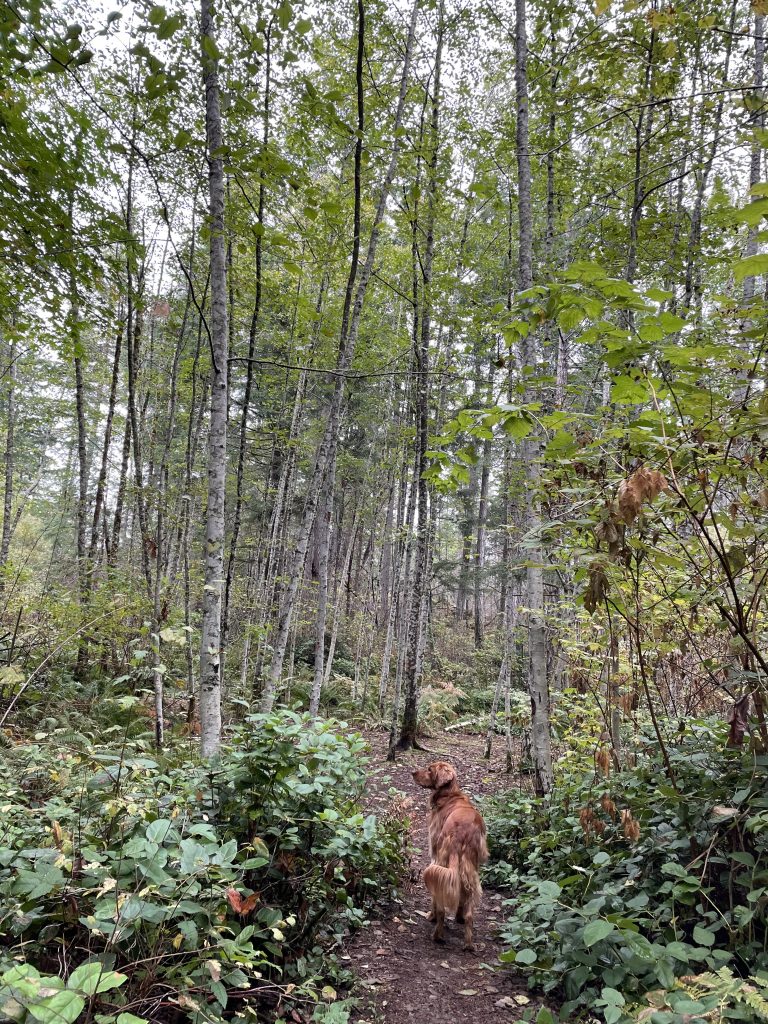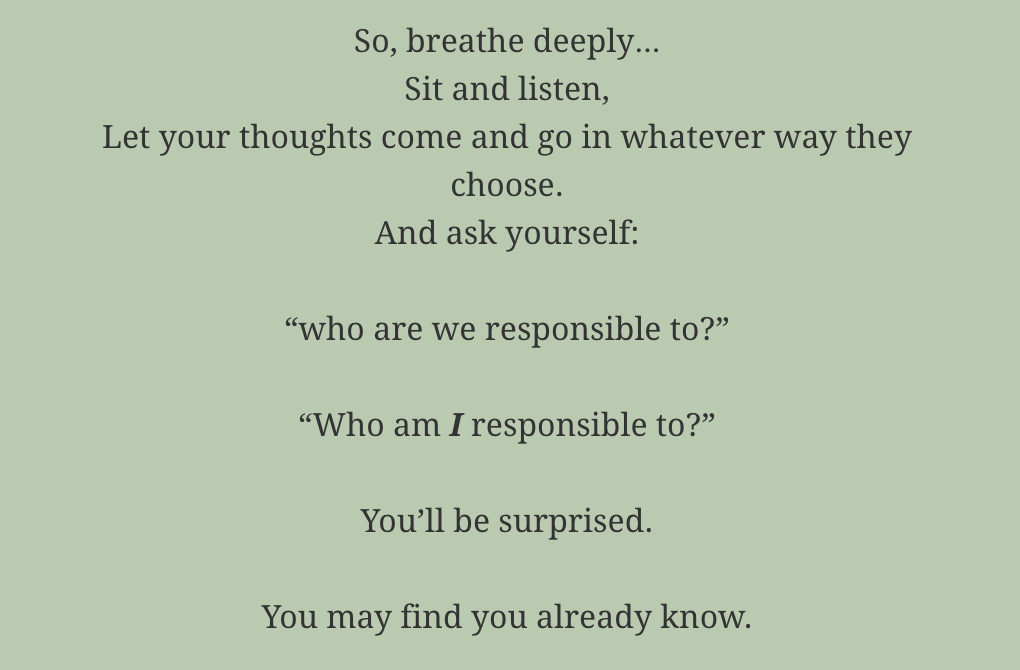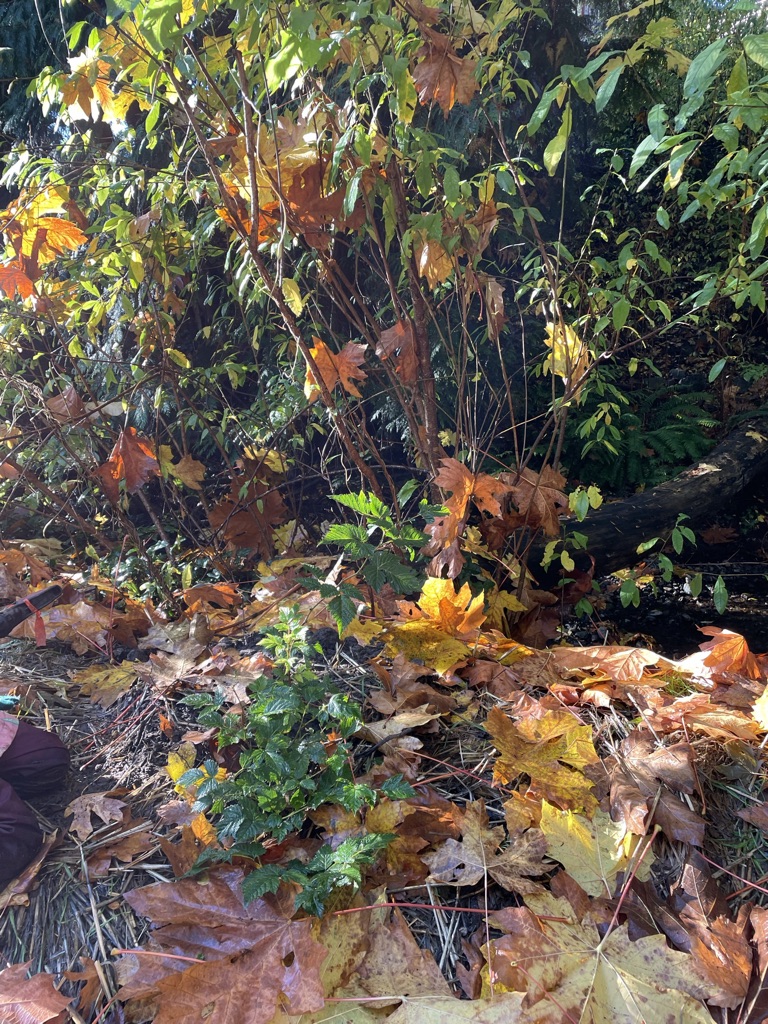Written by Cassia Broomfield
Illustrated by Maillen Garcia
It has been told that the Fawn Lily received its name because the leaves resembled those of a fawn’s ears but, nobody knows how or why the fawn lily resembles a fawn so much. That’s why I am here today. To share the legend of the little fawn and the mysterious lily.

Many centuries ago, before humans roamed the earth, there was a fawn named Artemis. She was a young doe who loved to stray from the rest of the herd and explore the new world around her. Her herd was never afraid, as they were the only animals at the time, they had so very little to worry about. The only thing that scared the herd was the mysterious lily that lived deep in the woods under a giant pine tree. Artemis did not know why they were afraid of a flower because she never listened to her elder’s warnings and cautionary tales about the lily.
One day as Artemis was exploring, she found herself in an unfamiliar place, a place that she had never been before. She looked around to see if she could find her herd, she was alone. By this time Artemis was beginning to get hungry as she had not returned to her home for dinner. She looked up at the sky, the sun had gone to bed, she was greeted by her friend the moon instead.
Artemis continued her path through the woods hoping that she would find a way back home or, at least something to eat. She crept deeper and deeper into the forest until eventually, she reached a clearing. To most, this would not seem strange, but the clearing had the sun shining through the trees; Artemis was sure that she had just seen the night sky only a few minutes ago. Her eyes scanned the mossy rocks and grass and landed upon a giant pine tree. Artemis’ stomach grumbled by just looking at the delicious pine needles. As she was just about to turn around and head home she heard a melancholic voice say “oh Artemis, are you not hungry?” the young fawn whipped her head around to try and find who was speaking to her, but all she found was a tall white lily weeping at the base of the pine. “I am hungry, lost, and very afraid” Artemis whispered back to the lily. “There is nothing to be afraid of here in the forest, come closer, I will offer some of my petals for you to ease your hunger” the lily responded in a gentle tone. Artemis fell under the spell of the lily and soon was munching happily on the now glowing white petals.
After finishing her snack, the light in the clearing turned dark and the moon was visible once again as Artemis lay on the ground and went to sleep. The lily smiled as Artemis fell into a spell-binding sleep. The moon watched helplessly as her dear friend turned into a lily very similar to the one she had eaten the petals from. The moon wept with sorrow as there was nothing she could do to help her friend. The moon’s tears reached the earth and each tear grew into the lily her friend had become. Soon the woodlands had the delicate white flowers blooming all along the forest floor. The moon did not want her friend’s life to be wasted in vain so, the moon gave the new flower the name “Fawn Lily.” Since that day the moon would continue to weep every spring and more fawn lilies would grow covering the forests with the memories of her dear friend Artemis.



